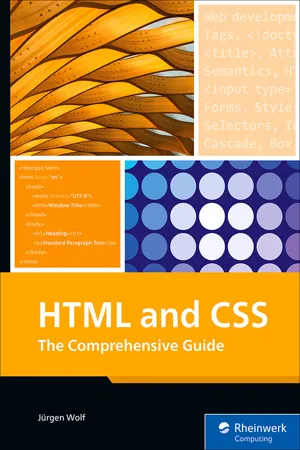Computer Science
Javascript Statements
JavaScript statements are individual instructions that make up a program. They can perform actions, declare variables, control flow, and more. Each statement typically ends with a semicolon, and multiple statements can be grouped together within curly braces to form a block of code.
Written by Perlego with AI-assistance
Related key terms
3 Key excerpts on "Javascript Statements"
- eBook - ePub
- Mike McGrath(Author)
- 2020(Publication Date)
- In Easy Steps Limited(Publisher)
See that the console displays the output plus the name of the HTML document and the line number upon which the JavaScript code appears that created the output.Click the Show/Hide button to hide or show the sidebar, click the Customize button to choose how the console window docks in the browser window, then click the Clear button to clear all content from the consoleJavaScript code is composed of a series of instructions called “statements”, which are generally executed in top-to-bottom order as the browser’s JavaScript engine proceeds through the script. Each statement may contain any of the following components:Make Statements• Keywords – words that have special significance in the JavaScript language.• Operators – special characters that perform an operation on one or more operands.• Values – text strings, numbers, Boolean true or false , undefined , and null .• Expressions – units of code that produce a single value.In earlier JavaScript code each statement had to be terminated by a ; semicolon character – just as each sentence must end with a . period (full stop) character in the English language. This is now optional so may be omitted unless you wish to write multiple statements on a single line. In that case, the statements do need to be separated by a semicolon, like this:statement ; statement ; statementSome JavaScript programmers still prefer to end each statement with a semicolon. The examples in this book choose to omit them for the sake of concision but the choice is yours. The JavaScript interpreter ignores tabs and spaces (“whitespace”) so you should use spacing to make your code more readable. For example, when adding two numbers:total = 100 + 200rather thantotal = 100+ 200Javascript Statements are often grouped together within { } - eBook - ePub
HTML and CSS
The Comprehensive Guide
- Jürgen Wolf(Author)
- 2023(Publication Date)
- SAP PRESS(Publisher)
// :// I am a comment // console.log('I am commented out');If your comment spans multiple lines or you want to comment out a multiline block of JavaScript code, you need to introduce that multiline comment with /* and end it with */ . Let’s take a look at an example:/* This is a comment, which can spreads across several lines.*/Passage contains an image
17.4 Using Variables in JavaScript
As is the case in almost any other programming language, JavaScript allows you to create and use variables. You need variables if you want to further process values or data in your script that have been entered by a user via an HTML form or read from a database, for example. Such a variable has a fixed memory address in the memory, which the JavaScript interpreter can access when needed.JavaScript isn’t a statically typed programming language, but a weakly typed or dynamic programming language, so such a variable can be of any type such as a string (string, text) or a number (integer, floating-point number). A variable can also store more complex forms of types and be an array (field of certain types) or even an object.Term Definition: Statement(s) A statement is almost any line of a script that ends with a semicolon. Consequently, statements are also the declaration and initialization of variables or the calling of functions.In JavaScript, variables can be declared using either the let or var keyword. You can also initialize a variable name with values right at the declaration by using the = character. Such a variable initialization is similar to what happens in algebra:let width = 5; // Number let pi = 3.14; // Number let aText = "Message" ; // String let userName = 'John Doe' ; // String let bigNum = 123456789; // NumberInstead of the keyword let you can also use var here. You’ll get to know the difference when we come to the scope of variables. Generally, however, you should use the keyword let - eBook - ePub
Multimedia Web Design and Development
Using Languages to Build Dynamic Web Pages
- Theodor Richardson, Charles Thies(Authors)
- 2012(Publication Date)
- Mercury Learning and Information(Publisher)
client-side language, meaning all of the computations are done and actions are taken on the client’s Web browser.A programming language is a formal set of commands that can be used to manipulate data in a system; the programs using this kind of language are compiled and linked, turning the manually typed code into machine code prior to execution.A scripting language is a formal set of commands that can be used to manipulate data in a system; the scripts using this kind of language are written without the steps to compile and link them into machine code prior to execution.A client-side language, or front-end language, is a scripting or programming language that is executed on the local machine without involvement from the server. The client can view all source code.A server-side language , or back-end language, is a scripting or programming language that is executed on the server, where only the results of the computation are delivered to the client machine. In general, the client does not see the source code.Computational complexity is an estimate of how long it will take a program or a script to complete its operation. Syntax structures like loops and complex mathematics increase the complexity of a program or script. This can be measured in different units and is often a general estimate.A variable is a named placeholder representing a data value that may or may not change during execution.When JavaScript is invoked, the browser is using the computing resources of the local machine to process the information and compute the results. This means the server is not slowed down by this computation, but it also means the speed and efficiency of the script are determined by the state of the user’s machine, which is generally unknown. For this reason, JavaScript works best when it is concise and limited in computational complexity
Index pages curate the most relevant extracts from our library of academic textbooks. They’ve been created using an in-house natural language model (NLM), each adding context and meaning to key research topics.


